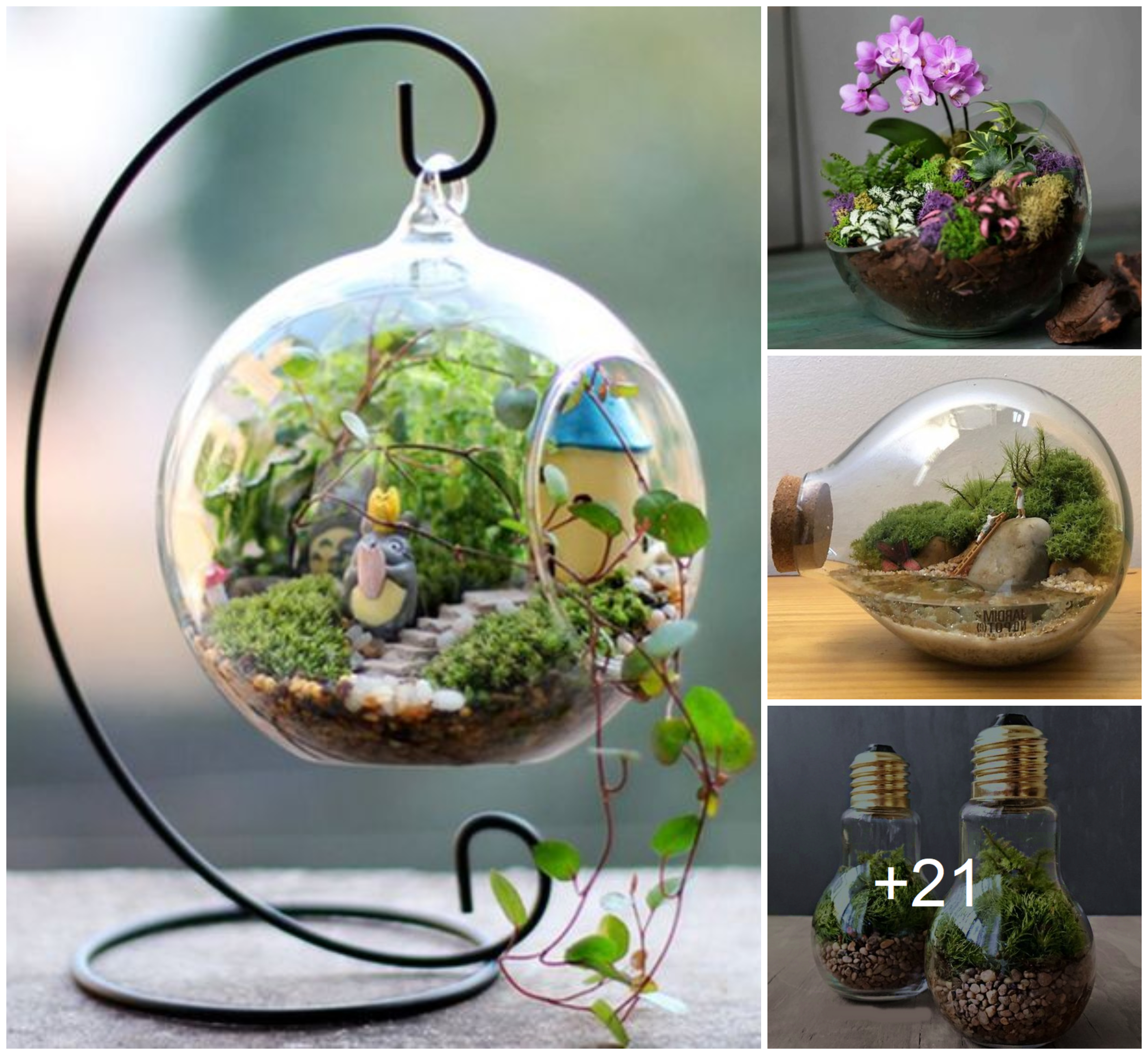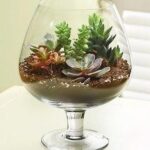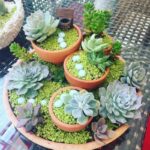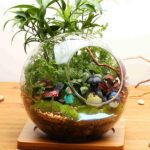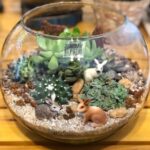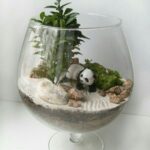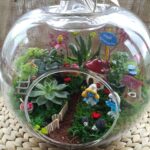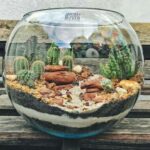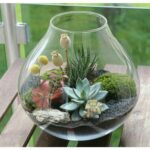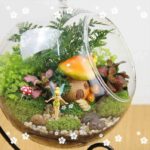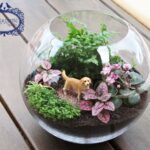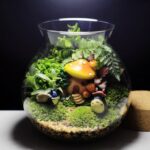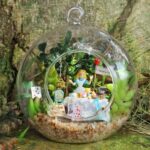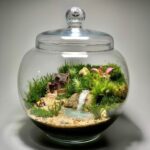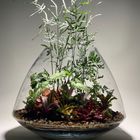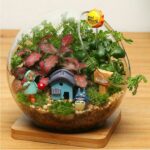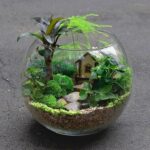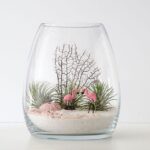Make your own terrarium
Do you feel like your living room could use some plant love?
Terraria are closed glass containers with a beautiful display of slow growing plants. They are a great way to get a dose of nature indoors.
These mini greenhouses are easy to maintain and each creation is unique.
Where to start?
You probably have a few glass containers around the house – from old jam jars to large pasta containers.
Choose any container that gives you enough room to get to a plant once it’s in there.
No cap? No problem!
Open terrariums are better for cacti and succulents. Tropical plants, such as mosses or air plants, do better when you create a humid environment, so make sure the lid is closed.
You will also need:
Small Rocks or Pebbles: Take some gravel from your yard for the base layer to help drain along
Soil: Potting soil is vital. Most soils will work well for this, and you only need a handful
Activated charcoal: This may not be in everyone’s closet, but easy to find. This keeps your terrarium water fresh and prevents bacteria from growing
A selection of small tools: pen/chopstick, small trowels, long spoons will do
Decoration: Everything you want to make it truly unique. Moss makes a colorful base, or small objects can bring it to life
Plants of course!
Choose the right plant
Choose a slow-growing and small plant for your terrarium.
Consider a range of leafy plants, succulents and cacti, choose the right one for your open (dry) or closed (moist) ecosystem.
Here are some suggestions, but there are many more out there:
Air plant (Tillandsia stricta)
Nerve plant (Fittonia)
Meadow spike moss (Selaginella apoda)
Spotted plant (Hypoeste phyllostachy)
Sweet ruff (Galium odoratum)
Earth star bromeliad (Cyrpthanthus)
Thumb plant (Tradescantia zebrina)
Hen and Chicks (Echeverias)
Why not get creative and design a set of ‘scenes’, from a fairytale forest to an arid desert landscape?
Or keep it minimal and just have one to start.
Set up your terrarium
This can get messy, so protect your workspace if you build this in your living room.
1. In your clean and dry container, add your pebbles to about 2-3 cm.
Top tip: Vary your design by turning the container on its side instead, so the lid points to the side instead of up
2. Then add the charcoal. You just need to spread it over. (If you have some sphagnum moss you can add it after this).
3. Alternate the potting soil. Make sure there is enough so that the plant roots sit comfortably deep inside it.
4. Your largest plant goes in first.
. Using your small trowel, or long handle, make a hole for the plant.
. Carefully place the plant in the soil. You can use a pen-like tool to fill in and flatten the soil around it.
. Make sure your plant has enough room to grow a little; do not press them against the glass.
. If you have more, keep adding the rest of your plants.
5. Put in other rocks, or maybe some moss or sand to cover the soil if you like.
6. Add any finishing touches.
7. Close the lid – or not!
Top tip: Want some moss? Use a spring stick or a soil rake to rake your garden. In the shady parts, some moss can grow and you can add that to your creation.
Keeps your terrarium alive
Choose a location with lots of natural light (but not in direct sunlight)
Spray your terrarium with water every two weeks; or when the soil is dry to the touch
Keep an eye on it. These small greenhouses can form condensation when closed. A little is fine, but if the glass becomes foggy, it may be because you watered it too much
You can remove the top and dry it out for a few hours to clean it up.
The first terrarium
The Wardian case was an early form of a terrarium.
It is known that it was discovered by accident.
Dr. Nathaniel Baghsaw Ward, a keen amateur naturalist, collected a moth cocoon in a sealed glass bottle along with some fern leaves and soil and left it for three years.
The plant began to germinate and grow in a small microcosm of its tropical environment, proving that plants could survive without watering in a closed glass case.
Ward built a glass box to help transport live plants around the world and tested it in 1833 on a voyage between London and Sydney.
This Wardian case changed botanical exploration, enabling collectors to safely return specimens to Kew.
 Flower Love
Flower Love
